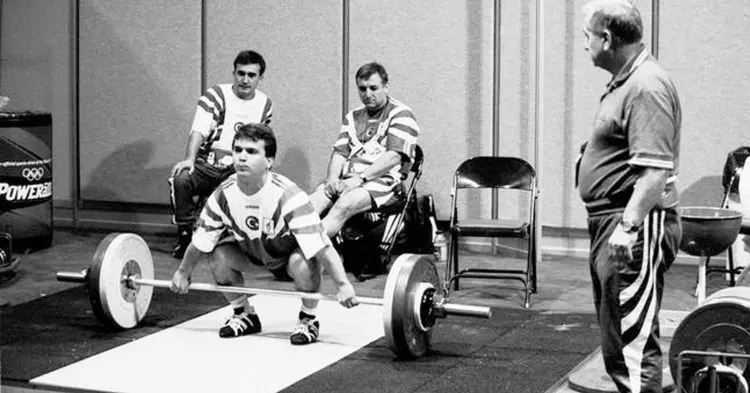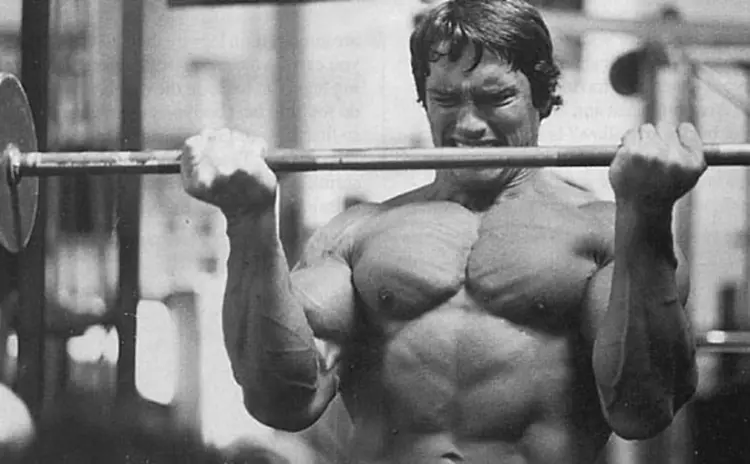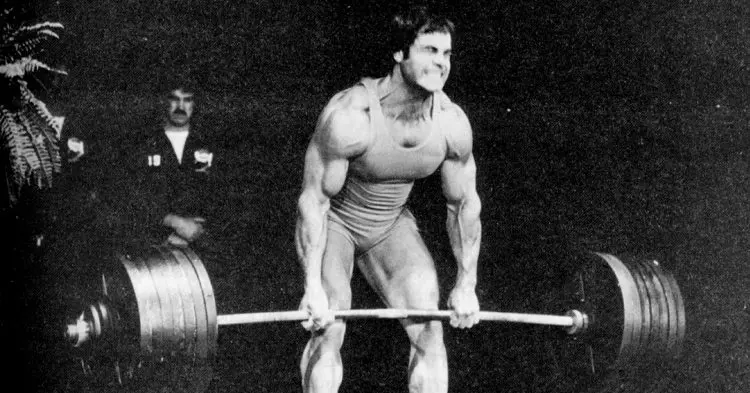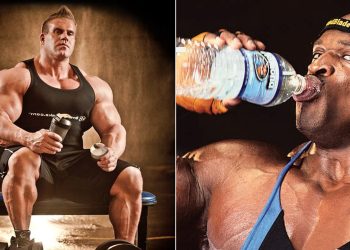Back in the golden era of bodybuilding, most of the champions of the day trained for two hours per workout, six days a week. Terms like overtraining were not part of their language, and those same lifters went on to build some of the most impressive, aesthetically pleasing physiques ever seen in bodybuilding.
Fast forward to the 21stcentury, and some fitness experts believe that training for more than 60 minutes can severely undermine your progress, causing a decrease in testosterone and an increase in cortisol levels. They say that any workout lasting more than 60 minutes is nothing but a waste of time and worry about things like overtraining, adrenal burnout, nervous exhaustion, and other insidious conditions.
So, who’s right? And does workout duration really matter? Let’s discuss this contentious topic!
Workout Duration – What Does That Even Mean?
The first thing to clear up is that workout duration refers to the length of your workout, from start to finish. If you pick up your first weight at 4 pm and do your last rep of your last set at 5.15 pm, your workout duration is 75 minutes.
However, that doesn’t mean you actually trained for 75 minutes. A lot of stuff makes up your workout duration, including:
Level Up Your Fitness: Join our 💪 strong community in Fitness Volt Newsletter. Get daily inspiration, expert-backed workouts, nutrition tips, the latest in strength sports, and the support you need to reach your goals. Subscribe for free!
- Warming-up
- Setting up your exercises
- Moving from one exercise to the next
- Changing weights
- Resting between sets
- Rehydrating
- Chatting to your buds
- Updating your social media status
- Taking selfies
- Lining up your favorite workout playlist
- Waiting for the machine you want to be free
- Flexing in front of the mirror…
You might have spent 75 minutes in the gym, but the amount of time spent exercising was much, MUCH less than that.
For example, as a powerlifter, I typically trained in the 3-5 rep range and rested 3-4 minutes between sets. I would be in the gym for around 90 minutes and do about 15 work sets per workout. This equated to approximately 7.5 minutes of actual training. The rest of the time was spent warming up and resting between sets.
If 3-4 minutes of rest sounds excessive, bear in mind that top-class lifters often rest 10-15 minutes between max-effort sets and train for anything up to three hours per workout.
In contrast, if I do something like a resistance training circuit, it’s pretty much non-stop for 40 minutes. So, despite the much lower duration, total training time is significantly higher.
The point is that workout duration is hugely variable, and even the same workout can take more or less time from one day to the next, depending on things like set-up time, rest periods, etc.
To say that training more than a specific time will negate the benefits of your workout is erroneous because the amount of work done during your training session can vary enormously. Training volume and intensity are MUCH more important than how long you spend in the gym.
The Hormone/Workout Duration Myth
There is a commonly held belief that training for longer than 45-60 minutes flips your body from anabolism (muscle building) to catabolism (break down). The idea is that long workouts lead to a decrease in anabolic testosterone levels and an increase in catabolic cortisol levels.
Needless to say, for most training goals, long-term high cortisol and low testosterone WOULD undermine your progress, but the duration of your workout has no meaningful effect on your post-training testosterone/cortisol ratios.
The reason that so many people believe that long workouts are detrimental to progress can probably be attributed to Bulgarian Olympic lifting coach Ivan Abadjiev. During his tenure, Abadjiev took an average weightlifting team to European, World, and Olympic glory.

This is often attributed to reducing the length of his athlete’s workouts to 30-45 minutes and training 2-3 times per day. Using what has since become known as the Bulgarian method, Abadjiev hypothesized that short workouts resulted in less cortisol and higher levels of testosterone. Training 2-3 times a day meant, he believed, that the lifters experienced prolonged increases in testosterone, resulting in better results.
Level Up Your Fitness: Join our 💪 strong community in Fitness Volt Newsletter. Get daily inspiration, expert-backed workouts, nutrition tips, the latest in strength sports, and the support you need to reach your goals. Subscribe for free!
However, the reason for Bulgaria’s dominance in weightlifting is more likely due to aggressive use of performance enhancing drugs, and the fact that by training twice a day, his athletes were simply training twice as hard! Hormones (other than artificial ones) had no real impact on the success of the lifters.
Coach Abadjiev also broke his own training rules and often made his lifters do day-long sessions of manual labor in stone quarries to toughen them up. If anything is going to mess with your cortisol/testosterone ratio, swinging a sledgehammer all day would probably do it!
That isn’t to say that the Bulgarian method doesn’t work – it clearly has and does. But, increasing the average training intensity and volume is the main key to its effectiveness. It’s also interesting to note that other successful weightlifting nations have used very different approaches to training and achieved similarly impressive results. The achievements of the Bulgarian team could simply be the result of Ivan Abadjiev’s prowess as a coach.
Lots of research shows that workout duration and post-exercise hormone levels are not influenced by workout duration, and training for more than 60 minutes will not turn you into a catabolic, cortisol-saturated mess.
In fact, studies have shown that workouts lasting MORE than 90 minutes increased testosterone above normal levels for over two hours after training had finished (1). This research is supported by those old-school lifters who often trained for two or more hours, six days a week. If long workouts are so crippling, how is it that they achieved such phenomenal results?
In addition, research also suggests that post-training cortisol levels could be a significant trigger for accelerated muscle growth. In studies, the participants with the greatest rise in cortisol also experienced the most significant gains in muscle and strength (2). Providing you eat, rest and recover after your workouts, long workouts can produce excellent progress.
It also appears that your post-exercise hormonal response has less of an impact on the development of strength and muscle mass than previously thought (3) and that longer workouts won’t automatically crush your gains.
So, How Long Should a Workout Last?
Ultimately, there is no perfect workout duration. Short workouts, like High-Intensity Training, are over in minutes and can help you build strength and muscle mass despite their brevity. In contrast, old-school high-volume workouts like push-pull-legs also work. It’s up to you to discover the best workout duration for you.

Short workouts may be best if:
- You’re feeling tired
- You don’t recover well between workouts
- You’re an older exerciser
- You work out at a fast pace
- Intensity levels are very high
- You’re short of time
- You’re in a calorie deficit (dieting for fat loss)
In contrast, longer workouts may be better is:
- You’re very well-rested
- You’ve got good recovery abilities
- You’re a younger lifter
- You prefer a slower-paced workout
- Intensity levels are moderate
- You enjoy longer workouts
- You’re bulking (dieting for weight gain)
Ultimately, time is a valuable commodity, and most people should avoid wasting it. Your workout should be long enough to produce the results you want, but no longer than necessary. For most people, that means 45-90 minutes per workout.
It’s also worth remembering that workout intensity and duration are usually inversely proportional. As bodybuilders often like to say, you can train hard, or you can train long, but you can’t do both. The more intense the workout, the shorter it should probably be.
That said, these guidelines are not set in stone and have nothing to do with your hormonal response to exercise. If you want to train for more than 90 minutes, there is no reason not to. Providing you aren’t wasting your energy on unproductive exercises and sets, long workouts can be every bit as effective as shorter training sessions.
Wrapping Up
Like so many aspects of training, workout duration is highly variable, and there is no perfect prescription. We’re all individuals, and we all respond to workouts differently. While long workouts (90 minutes plus) can work for some people, 45 minutes or less may be better for others. It’s up to you to discover what works best for you.
Ultimately, workout intensity, progression, and consistency are the drivers of progress. There is no need to micromanage your workouts by worrying about exactly how long you spend in the gym. Ultimately, such things are not all that important. Get in the gym, train hard, eat right, and get plenty of sleep. That’s what really matters!
References:
1- PubMed: Hormonal and growth factor responses to heavy resistance exercise protocols https://www.ncbi.nlm.nih.gov/pubmed/2262468
2- PubMed: Associations of exercise-induced hormone profiles and gains in strength and hypertrophy in a large cohort after weight training https://www.ncbi.nlm.nih.gov/pubmed/22105707
3- PubMed: Post exercise hypertrophic adaptations: a reexamination of the hormone hypothesis and its applicability to resistance training program design https://pubmed.ncbi.nlm.nih.gov/23442269/










